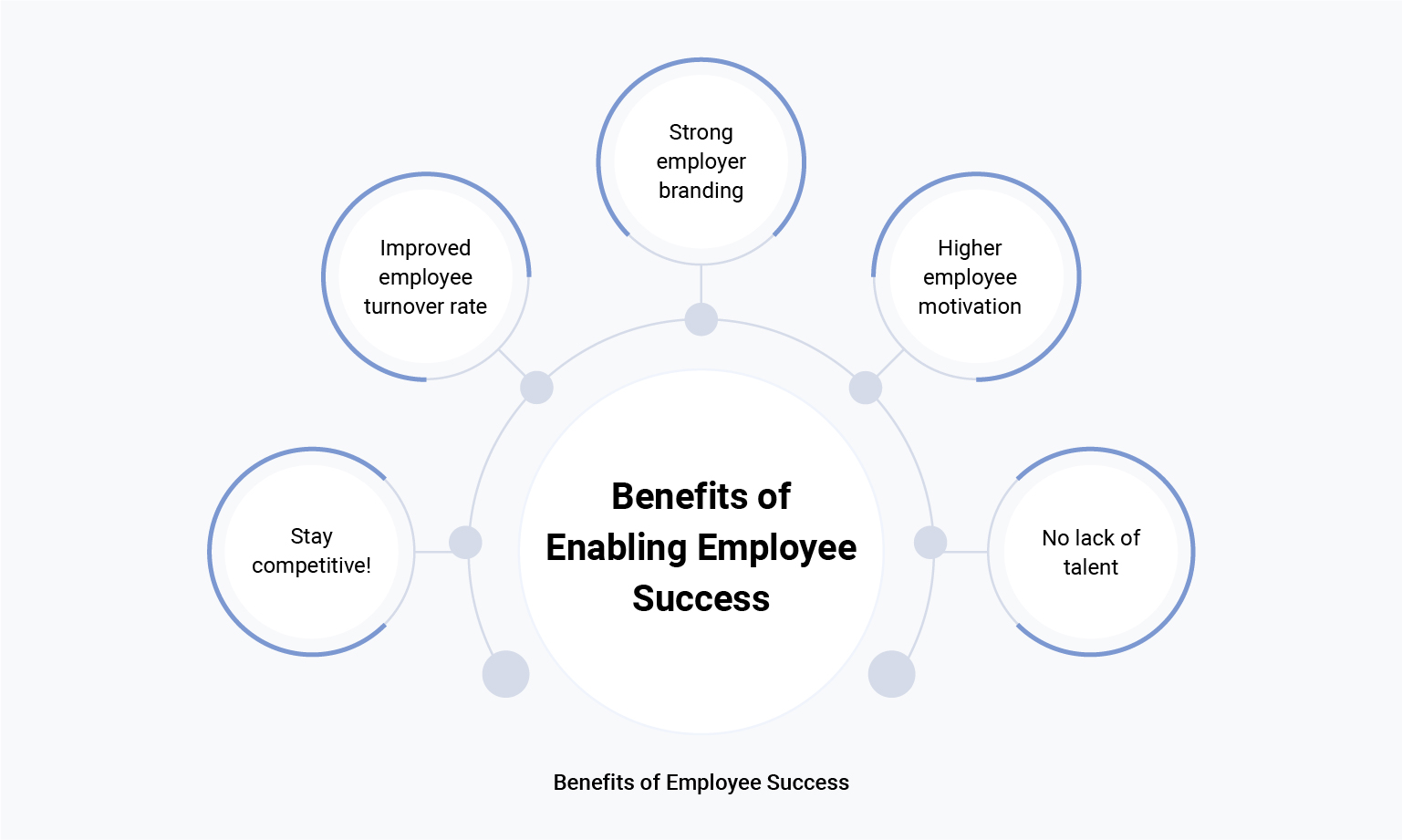May 4, 2023
How to Enable Employee Success in Your Organization

Do you know what is your greatest lever to accomplish business success? Well, it is employee success. Several businesses have mastered customer and product success, but only a few have found out how to maximize the success of their employees. If you fail to engage and motivate your employees, there will be an increased turnover, and you will have difficulty achieving higher revenue and profit. True success comes with engaged and productive employees who create the best quality products and services while ensuring customer delight and retention.
Industry leaders know how to align employee engagement to employee performance, thus propelling employee, team, and business success.
Defining Employee Success
Proactive enablement of the best employee experience throughout the lifecycle of an employee is employee success. Employee success involves strategic planning to support employees in a manner that permits them to do their work and alleviates a high level of engagement and productivity.
Ways to Enable Employee Success
Listen to what your employees need
Check your employee’s pulse. When you listen to your employee’s requirements and concerns, you learn and understand how they feel and how to enable them to do the best work possible. Conduct employee surveys to see your employee’s current state and feelings.
Keep your workers informed
If you fail to communicate timely and effectively, there is a negative effect on your employees’ experience. During a crisis, proper communication becomes even more important. For instance, we could see updates from local authorities, safety tips, work policy changes, etc., communicated to employees during the pandemic. It is good to have an appropriate communication solution within the organization. It enables employers to keep their employees well-informed and supported. Regarding work-related updates, an employee experience platform like UnlockTalent enables you to see who is working on what and how close or far you are from your organizational goals.
Appreciate and reward work
You can 2X your employee experience when you recognize and appreciate their efforts. After all, who doesn’t want to hear good things from their peers or manager? Boost your employee’s productivity and morale by showing them how they and their contribution matter. You may praise them in the “Praise Wall” and make your post personalized by adding a badge, say “Third Eye” or “Beaming Buddy”. This feature comes in handy in an employee experience platform. Besides feeling valued and happy in the organization, recognition sets employees on the correct path of unleashing their innovation, growing more confident, and achieving workplace success.
Boost effective team collaboration
One of the best ways to encourage employee success while your employees are remotely working is to enable efficient collaboration. Having an employee experience platform helps a big deal, as it connects people physically distant from one another. They can easily see who is working on what and how one is progressing. Due to the weekly check-ins feature of such a platform, an individual can better plan his current and upcoming weeks, thus staying more organized and productive. Besides, using 1-on-1s, the user can set up a planned meeting, keep the meeting minutes, create a task, and share responsibility with others. 1-on-1s, thus, not only further engagement but also transparency.
Equip your managers with a proper feedback mechanism
Team leaders or intermediate higher-ups are the first lines of communication with employees. Whether working remotely or operating from the office, managers need guidance on how to manage their teams in a better manner. The manager may not be equipped enough to lead. More than 50% of managers do not receive proper training. Train them and stress the relevance of employee recognition and feedback. Note that employee feedback is one of the key drivers for employee success. The safest bet is to have a tool, like an employee engagement tool, that enables employees to request feedback from their managers and share their views on their managers if they want to.
Benefits of Enabling Employee Success

